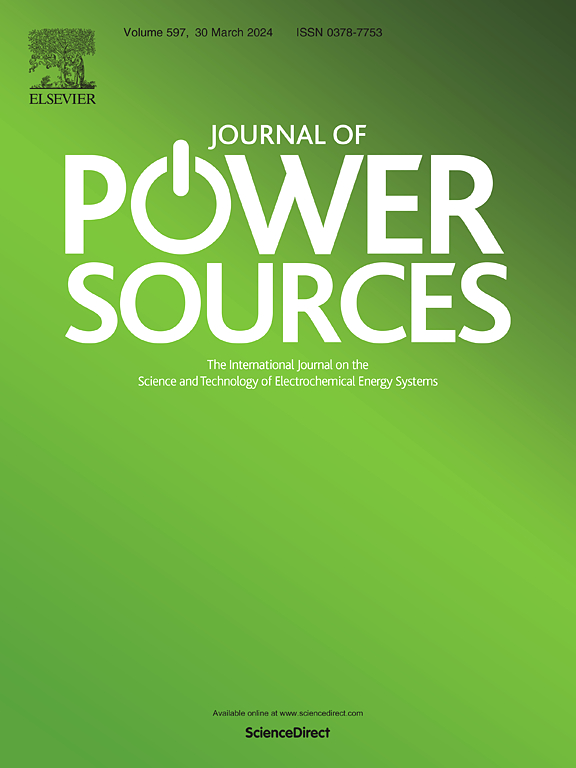Engineering high-concentration electrolyte with high ionic conductivity and solvation structure regulation enables high-performance Li/CFx primary batteries
IF 8.1
2区 工程技术
Q1 CHEMISTRY, PHYSICAL
引用次数: 0
Abstract
Lithium/fluorinated carbon (Li/CFx) batteries have garnered significant interest because of their exceptionally high theoretical energy density compared to other primary energy storage systems. However, the slow ionic transport of the electrolyte during the discharge phase restricts its ability to achieve the theoretical maximum. Herein, a novel high-concentration electrolyte is proposed based on one salt (lithium tetrafluoroborate (LiBF4)) and two high dielectric constant solvents (propylene carbonate (PC) and N,N-dimethylacetamide (DMAC)). This innovative electrolyte formulation has significantly enhanced a notable improvement in the discharge performance of Li/CFx batteries. Specifically, Li/CFx batteries used of the high-concentration electrolyte demonstrate a higher discharge voltage platform of 2.68 V (compared to 2.50 V with a commercial electrolyte) and a higher energy density of 2175 Wh Kg−1 (vs 1928 Wh Kg−1 with a commercial electrolyte) at a current density of 50 mA g−1. Notably, the overall performance improvements are largely due to the utilization of a high-concentration electrolyte with high ionic conductivity and regulated solvation structure (with less coordinated solvents), leading to the superior Li+ transport and facilitating more effective participation of Li+ and CFx in the reaction, thereby boosting capacity. This strategy offers valuable insights into electrolyte design for the improvement of electrochemical performance of Li/CFx batteries.

求助全文
约1分钟内获得全文
求助全文
来源期刊

Journal of Power Sources
工程技术-电化学
CiteScore
16.40
自引率
6.50%
发文量
1249
审稿时长
36 days
期刊介绍:
The Journal of Power Sources is a publication catering to researchers and technologists interested in various aspects of the science, technology, and applications of electrochemical power sources. It covers original research and reviews on primary and secondary batteries, fuel cells, supercapacitors, and photo-electrochemical cells.
Topics considered include the research, development and applications of nanomaterials and novel componentry for these devices. Examples of applications of these electrochemical power sources include:
• Portable electronics
• Electric and Hybrid Electric Vehicles
• Uninterruptible Power Supply (UPS) systems
• Storage of renewable energy
• Satellites and deep space probes
• Boats and ships, drones and aircrafts
• Wearable energy storage systems
 求助内容:
求助内容: 应助结果提醒方式:
应助结果提醒方式:


